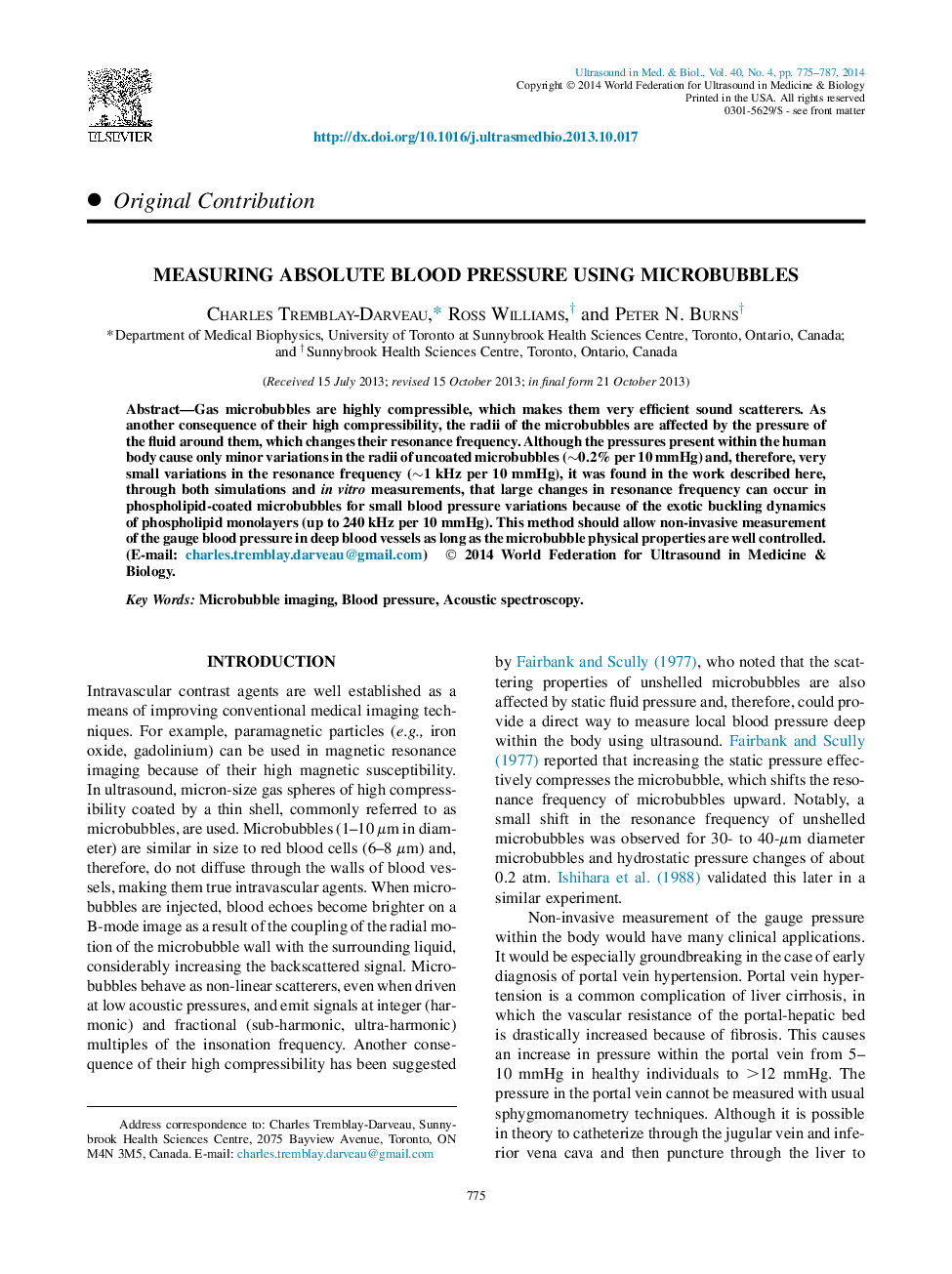| Article ID | Journal | Published Year | Pages | File Type |
|---|---|---|---|---|
| 10691713 | Ultrasound in Medicine & Biology | 2014 | 13 Pages |
Abstract
Gas microbubbles are highly compressible, which makes them very efficient sound scatterers. As another consequence of their high compressibility, the radii of the microbubbles are affected by the pressure of the fluid around them, which changes their resonance frequency. Although the pressures present within the human body cause only minor variations in the radii of uncoated microbubbles (â¼0.2% per 10 mmHg) and, therefore, very small variations in the resonance frequency (â¼1 kHz per 10 mmHg), it was found in the work described here, through both simulations and in vitro measurements, that large changes in resonance frequency can occur in phospholipid-coated microbubbles for small blood pressure variations because of the exotic buckling dynamics of phospholipid monolayers (up to 240 kHz per 10 mmHg). This method should allow non-invasive measurement of the gauge blood pressure in deep blood vessels as long as the microbubble physical properties are well controlled.
Keywords
Related Topics
Physical Sciences and Engineering
Physics and Astronomy
Acoustics and Ultrasonics
Authors
Charles Tremblay-Darveau, Ross Williams, Peter N. Burns,
